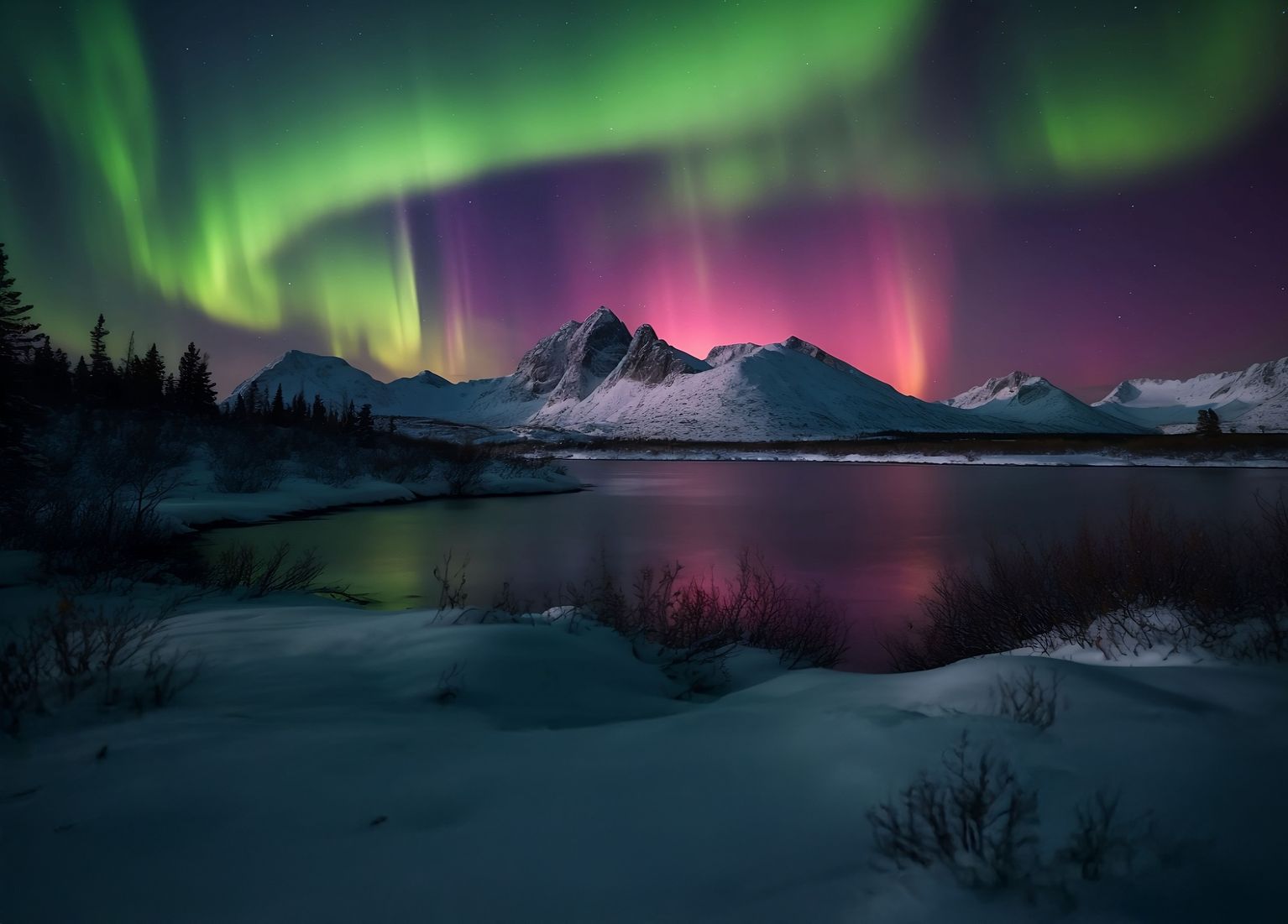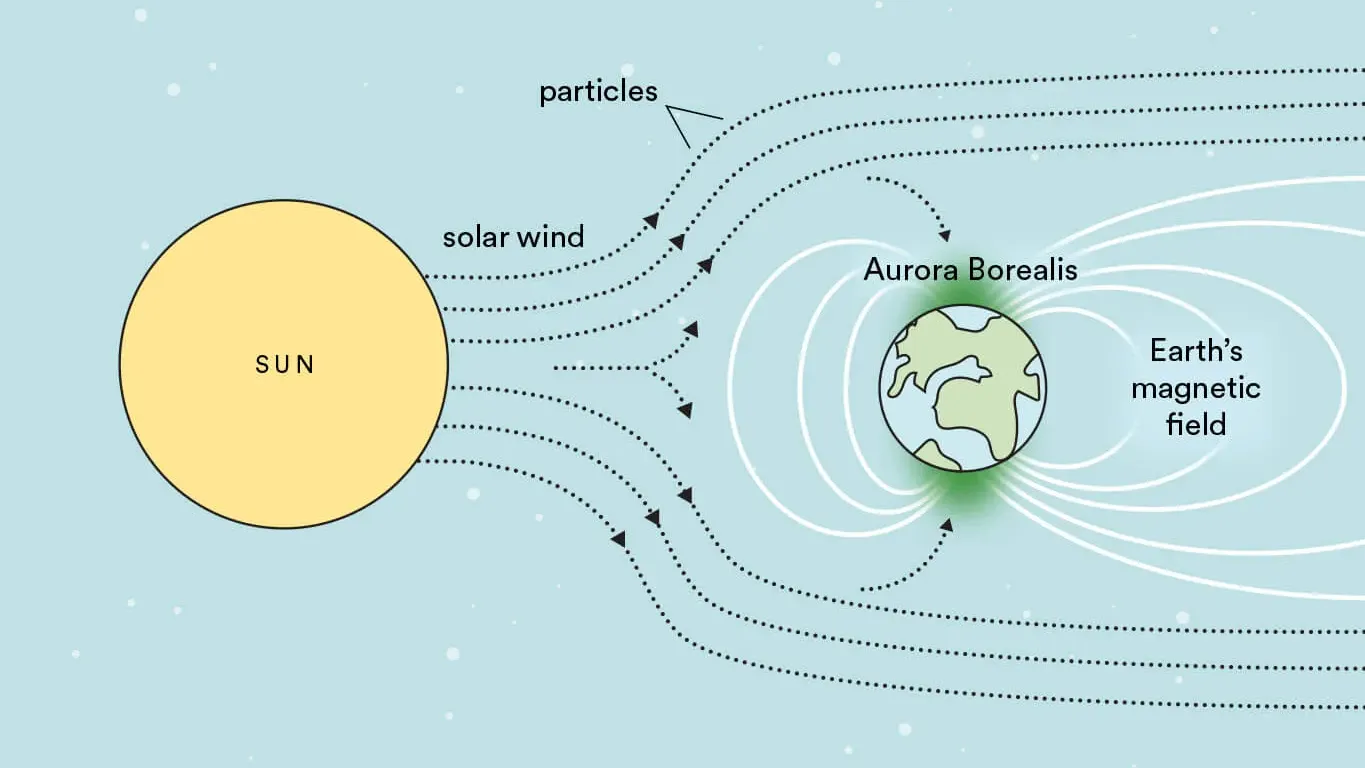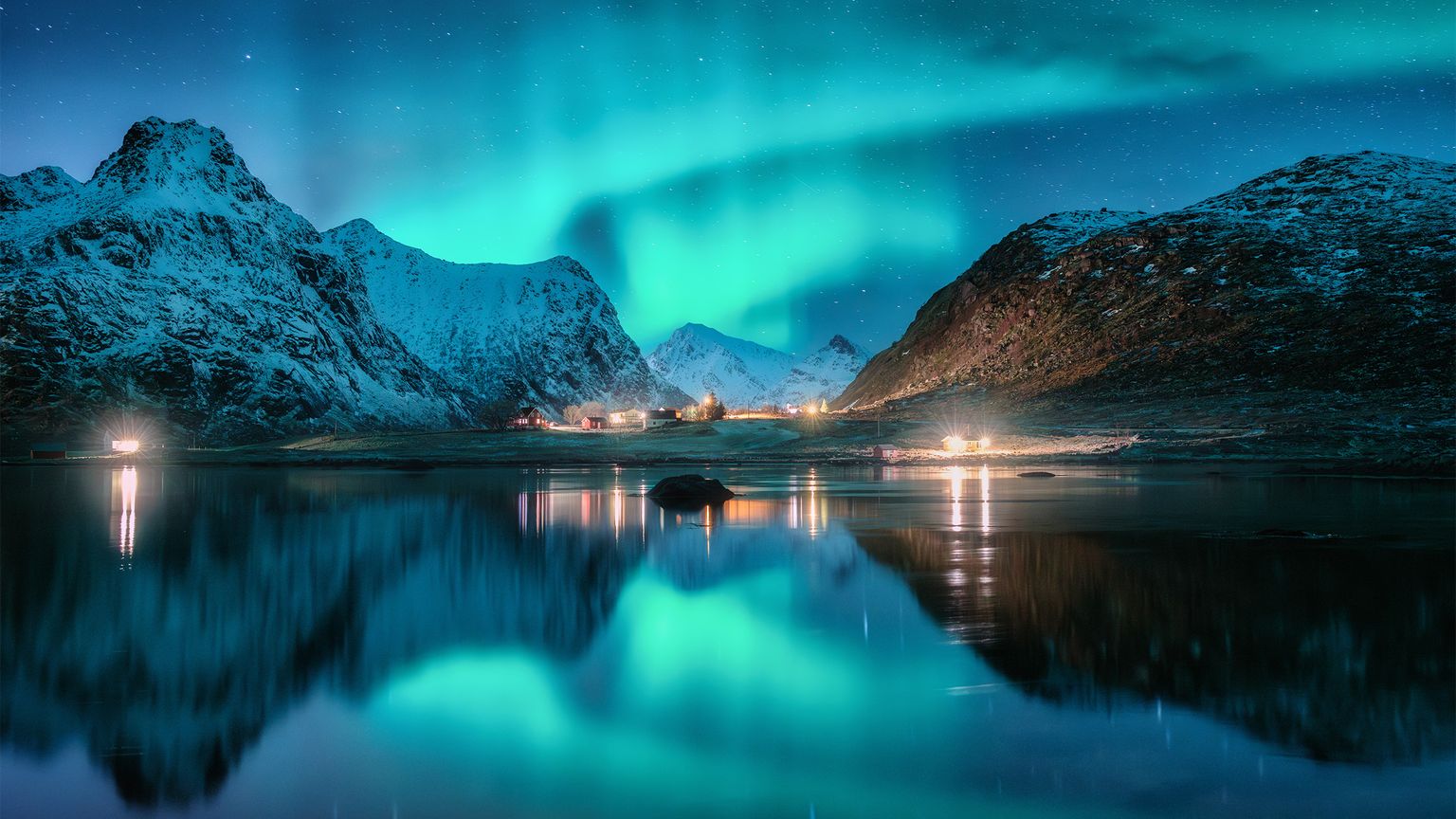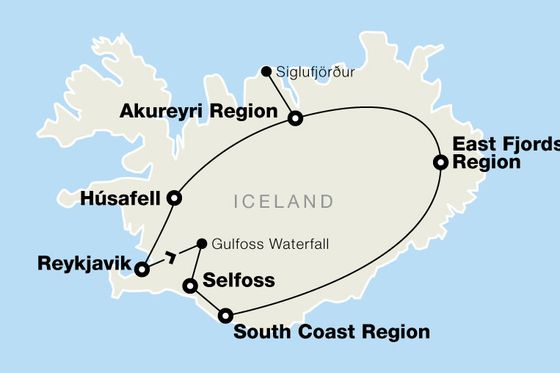
The northern lights explained—and where to see them on tour
Learn what causes the northern lights, the best places and times to see them, and where to go on tour in 2026 and 2027 to witness the aurora borealis in Iceland, Norway, Canada—and beyond.
Shimmering ribbons of green, purple, and gold that dance across star-filled skies—the northern lights are one of Earth’s most enchanting natural wonders. But what exactly causes this cosmic light show, and where to see northern lights at their best? In this guide, we’ll uncover the science behind the aurora borealis and share the top destinations—like Iceland, Alaska, Norway, and beyond—where you can witness it for yourself. Here’s everything you need to know to plan your 2026 or 2027 northern lights tour and make that bucket list moment a reality.

The aurora borealis explained
Let’s take a scientific look at how this beautiful phenomenon comes to be. Here’s the aurora borealis explained in simple terms.
What causes the northern lights?
The northern lights occur when solar winds carry electrically charged particles from the sun toward Earth. These particles collide with gases in Earth’s atmosphere, like oxygen and nitrogen, releasing energy as colorful light we know as the aurora borealis. This dazzling light show begins almost 93 million miles away, on the surface of the sun.
Where do the northern lights occur in the atmosphere?
These glowing displays take place high above us—between 60 and 70 miles above Earth’s surface—and can stretch hundreds of miles into space. The colors we see depend on which gases the solar particles encounter: oxygen creates greens and reds, while nitrogen produces blues and purples. It’s a breathtaking reminder that the beauty we see is, quite literally, illuminated by science.
Why are the northern lights seen near the poles?
Here’s where Earth’s magnetic field comes into play. Acting like an invisible funnel, it directs the sun’s charged particles toward the planet’s poles, which is why the northern lights shimmer across Arctic skies, while their southern counterpart—the aurora australis—glows over Antarctica. These ethereal displays may seem otherworldly, but they’re the result of a natural, magnetic dance between our planet and the sun.

When and where can you see the northern lights?
The northern lights, whose scientific name is aurora borealis, are most commonly seen within a radius of about 1,500 miles around the North Pole. This area is known as the auroral zone, or the auroral oval. (Their southern cousin, the aurora australis, or southern lights, are visible within the same radius around the South Pole.)
Where is the best place to see the northern lights?
Travelers can spot these magical displays in northern Scandinavia, Iceland, Greenland, Alaska, northern Canada, and parts of Russia. The farther north you go, the darker and more remote your viewing spot, the better your odds. Clear skies, low light pollution, and high ground make all the difference.
When is the best time to see the northern lights in 2026 and 2027?
If you’re wondering when to see northern lights, your best chances are from September through early April—especially near the equinoxes, when auroral activity peaks. While the aurora technically glows year-round, long daylight hours can hide it from view, even within the Arctic Circle. Still, the northern lights are unpredictable, and there’s never a guarantee you’ll spot them. But if you’re fortunate enough to be there when the conditions are just right, it’s pure magic.

Best places to see the northern lights in 2026 and 2027
There’s plenty to consider when preparing for your northern lights tour: the type of landscapes you’d like to see, other activities in the area, and how far you want to travel, to name a few. But when it comes to the probability of spotting the northern lights and the quality of aurora-viewing experience, here are several top spots.
Iceland
Visit on: Iceland: Reykjavik & the Northern Lights tour →
Although most of Iceland is located south of the Arctic Circle, it’s still one of the best places for a northern lights sighting. Our Iceland: Reykjavik & the Northern Lights tour has two dedicated nights to chase the glow under ideal, low-light skies between October and March. Winter is typically the best season for light show viewing, but check out our seasonal Iceland guide to see what the other seasons have in store.
By day, explore Reykjavik’s colorful Old Town, walk through Thingvellir National Park, enjoy lunch at a geothermal farm, and admire black-sand beaches, glaciers, and waterfalls along the South Coast. After dark, keep your eyes to the sky—because when the KP index is in your favor, there’s no sight more magical.
Traveler Claire had an unforgettable northern lights Iceland tour. “We drove to see the northern lights about 45 minutes outside of Reykjavik, where there was less light pollution,” she said. “The first night was a faint but evident sighting, but the second night blew us all away! It was such fabulous conditions that we could see them clearly in Reykjavik city when we returned from our hunt.”
Alaska
Visit on: Alaska Northern Lights: Anchorage to Fairbanks tour →
Alaska’s remote, northern location makes it a great choice for a northern lights hunt. On our Alaska Northern Lights: Anchorage to Fairbanks tour, you’ll spend two nights in Fairbanks, where dark skies and minimal light pollution set the stage for nature’s greatest show. February and March’s long winter nights offer prime viewing conditions to try to catch the aurora dancing across the Arctic sky.
Experience Alaska’s immense natural beauty along with its wildlife on this well-rounded adventure. You’ll snowshoe through an old-growth boreal forest (with epic views of the Alaska Range), tour Denali National Park (keep your eyes peeled for bears!), and take an Alaska Railroad train ride (with massive windows that put thundering waterfalls into view). And of course, at night your Tour Director will take you to the best viewing spots in hopes of seeing the northern lights.
Norway
Visit on: Northern Lights of Norway: Oslo to Tromso tour →
Norway’s latitude and clear Arctic skies make it one of the best places in Europe to chase the northern lights. On our Northern Lights of Norway: Oslo to Tromso tour, you’ll explore both culture and wilderness—starting in Oslo at the Nobel Peace Center and Vigeland Sculpture Park before heading north to Narvik and Tromso, two prime aurora-viewing destinations where you’ll embark on evening light-hunting excursions. Check out other must-see moments to seek on our Norway Travel Guide.
Spend time with an Indigenous Sami family, visit the incredible Ice Domes in Tamok Valley, and opt to ride the Northern Lights Train (Norway’s northernmost railway) for an additional chance to see the aurora dance across the sky. It’ll take you high up the mountain towards the Swedish border while your guide tells you age-old folklores and local history. Take this Norway northern lights tour between December and March for your best chance to witness this Arctic wonder in all its glowing glory.
Canada
Visit on: Canadian Rockies by Train: Banff, Lake Louise & Vancouver tour →
Canada’s Rockies are more than towering peaks and glistening lakes—they’re also a prime spot for northern lights sightings. On our Canadian Rockies by Train: Banff, Lake Louise & Vancouver tour, you’ll spend four days in the Banff region, exploring snow-capped mountains, crystal lakes, and abundant wildlife like bears, elk, and moose. To make the most of your trip, check out our Banff National Park Travel Guide.
After lively group dinners, look up—the night sky may reward you with a magical auroral display. Taking a Canada northern lights tour during May or September when geomagnetic activity is high gives you the best chance to see the aurora. Plus, it’s a perfect time to experience the natural beauty and charm of the Rockies with scenic train rides and visits to cozy mountain towns.
Glacier National Park
Visit on: National Parks: Canadian Rockies, Glacier & Yellowstone tour →
A joint dark-sky effort between Glacier National Park and Canada’s Waterton Lakes National Park keeps light pollution to a minimum, making this region one of the best in North America to glimpse the northern lights. While you might think you’re too far south of the Arctic Circle, Glacier’s wide-open skies have surprised many travelers with stunning auroral displays when solar conditions are right.
On our National Parks: Canadian Rockies, Glacier & Yellowstone tour, you’ll explore some of North America’s most awe-inspiring landscapes. See Lake Louise’s stunning turquoise water, Yellowstone’s impressive Old Faithful geyser, and the dramatic mountains of the Grand Teton National Park. For your best chance at seeing the northern lights, plan your trip for October, when nights are longer and darker. The natural scenery will take your breath away, and at night, the sky just might do the same.


























































































